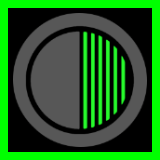
OUR CASE
At 48 hours Drew is off sedation and still unconscious.
He has been noted to have myoclonic movements.
How we prognosticate is arguably the most critical predictor of outcome
For those who make it to ICU after a OOHCA, the biggest cause of death (2/3 of deaths) is the hypoxic brain injury.
Only a few of these are from actual brain death.
Most of these neurological deaths result from active withdrawal of life-sustaining treatment (WLST) in patients where the severity of hypoxic-ischaemic brain injury indicates that survival with a poor neurological outcome is very likely.
So prognostication is critical in order to avoid an inappropriate WLST in patients who still have a chance of a neurologically meaningful recovery and to avoid futile treatment in patients with a severe and irreversible brain injury.
REF
CLINICAL EXAM
EEG
CT BRAIN
MRI BRAIN
SSEP
NEURON SPECIFIC ENOLASE
[Click the investigations to see more]
A bit more detail…
Key Components
Brainstem reflexes
> Pupillary reaction to light
> Corneal reflex
> Oculovestibular reflex
> Facial movement to central painful stimulus
> Cough reflex (usually tested with suctioning down ETT)
> Gag reflex
> Assess if spontaneously breathing
GCS
> Highly standardised and universally used
> Not specifically designed for this context
> Not as sensitive as the FOUR score, which gives more information about brain stem function
FOUR Score
> Calculator shown below
> Used for prognostication in the TTM2 Trial
> Absent or extensor motor response to pain (FOUR score motor response 0-1) at 96h or later, is a prerequisite to consider the neurologic prognosis poor
> Shown to predict outcome after cardiac arrest REF
Myoclonus
Also assess for status myoclonus: continuous and generalised myoclonus persisting for at least 30 min.
> Early status myoclonus (within 48 hours) is indicative of a poor prognosis.
> Bad but not 100% bad – in one study 9% of pts with myoclonus still had a good neurological recovery
An EEG performed between 48h and 96h after CA should be performed on all patients who survive to this point – regardless if they are awake or not.
An EEG with a highly malignant pattern, and without reactivity to sound and pain is indicative of a poor prognosis.
> Patterns that are considered highly malignant are:
1. Suppressed background (amplitude <10mV, 100% of the recording) without discharges.
2. Suppressed background with superimposed continuous periodic discharges.
3. Burst-suppression (periods of suppression with amplitude <10mV constituting 50% of the recording) without discharges.
4. Burst-suppression with superimposed discharges.
If an early (within 24h) brain-CT shows signs of global ischaemic injury, such as:
Generalised oedema
Reduced grey/white matter differentiation (all cortex same colour)
Sulcal effacement (sulci not visible)
Ventricular effacement (slit-like ventricles)
This is indicative of a poor prognosis.
If an additional CT is performed after 24h this may also be taken into account.
Later signs include hypoattenuation (darker) of basal ganglia, thalami, hippocampi and the internal capsule looks relatively lighter.
This is because these areas are more metabolically active so more sensitive to hypoxia.
They become ischaemic, then oedematous, hence darker.
As everything gets ischaemic and darker, the dural reflections and blood vessels look relatively lighter and this can look like a subarachnoid haemorrhage, even though this is not the case.
> A brain MRI at 3-5 days may be incorporated into prognostication if it is performed.
> A brain MRI is not mandatory.
Signs of global, diffuse, or bilateral multifocal ischemic lesions is indicative of a poor prognosis.
These may include:
Generalised oedema
Reduced grey/white matter differentiation (all cortex same colour)
Sulcal effacement (sulci not visible)
Ventricular effacement (slit-like ventricles)
> This is indicative of a poor prognosis.
On T2 and FLAIR sequences it may be easier to see ischaemia of basal ganglia, thalami and hippocampi which look whiter.
Again, this is because these areas are more metabolically active so more sensitive to hypoxia.
They become ischaemic, then oedematous, hence lighter.
> Somatosensory Evoked Potentials are a non-invasive neurophysiology test
> Relatively quick and easy to do
> More prognostic than EEG
Perform at or more than 48h post CA
> Absent SSEP N20-responses bilaterally are indicative of a poor prognosis
> There a few situations where they may be unreliable e.g. significant neck injury such as seen in a hanging REF
Neuron Specific Enolase (NSE) is a blood test measuring an enzyme released from brain injury.
> High levels of NSE are indicative of a poor prognosis.
NSE-sampling is not mandatory.
It may be used to help with prognostication after CA, but only in hospitals experienced with using this test.
If serial samples are available, and these are consistently higher than locally established levels associated with a poor outcome, this may be seen as indicative of a poor outcome.
Samples with haemolysis should be disregarded.
An Approach…
There’s lots written about the different ways of prognosticating and the importance of using a multimodal approach.
Few sources give an exact algorithm.
One approach is to follow the trial protocol used in the TTM2 Trial which is practical, pragmatic and evidence based.
TTM2 Approach to WLST
All patients are actively treated until 96 hours after CA except if:
- They become brain dead
- Further treatment is considered unethical due to irreversible organ failure, a disseminated malignancy, or other reasons
At 96 hours, once all effects of sedation are excluded, prognostication may occur.
WLST because of a presumed poor prognosis may occur if:
A FOUR-score motor response of 0 or 1
AND at least two of the following:
Bilaterally absent pupillary and corneal reflexes
Bilaterally absent SSEP N20-responses
Diffuse anoxic brain injury on CT or MRI
Status myoclonus <48h
High levels of serum NSE
An EEG with a highly malignant pattern and without any observed reactivity to sound or pain. Patterns that are considered highly malignant are:
1. Suppressed background (amplitude <10mV, 100% of the recording) without discharges.2. Suppressed background with superimposed continuous periodic discharges.
3. Burst-suppression (periods of suppression with amplitude <10mV constituting 50% of the recording) without discharges.
4. Burst-suppression with superimposed discharges.
Patients who have an unclear prognosis at 96h after CA are reexamined daily and WLST may be considered if neurological function does not improve and metabolic and pharmacological reasons for prolonged coma are ruled out.
However supporting care may continue regardless of the neurological prognosis, at the discretion of the treating physician, allowing for unusual individual circumstances.
REF

At 96 hours Drew is still unconscious and has been off sedation for > 48 hours. He now has normal liver renal function.
His myoclonic jerking has now stopped.
His eyes remain closed and he makes no motor response to a supra-orbital notch pressure.
His pupils are fixed and dilated. He has no corneal reflex.
He does have a cough reflex and is breathing at the same rate as the ventilator.
An EEG was performed at 48 hours when he was still having myoclonus. It showed no seizure activity and showed diffuse slowing, a suppressed background (amplitude 5-20mV) with no response to pain or loud stimuli on EEG.
The only CT was the one done early on excluding bleeding.
He’s had no MRI scan.
On day 3 he had SSEP’s which showed absent N20-responses.
NSE is not routinely performed at this hospital and was not ordered for Drew.
What’s his FOUR score?
Can you prognosticate at this stage with the information you have?




